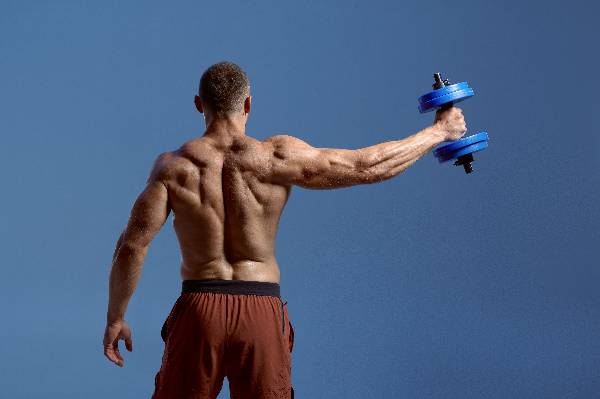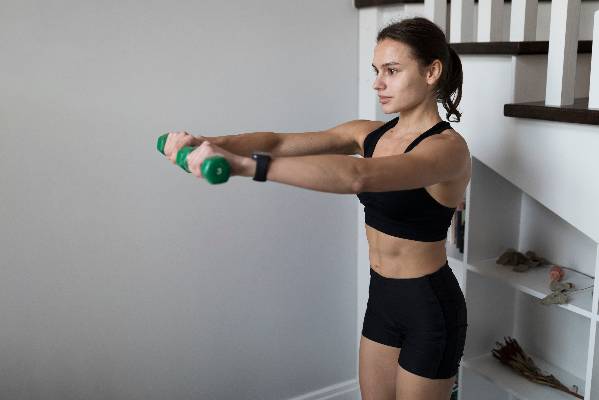How to Properly do a Shoulder Press Using Dumbbells
Introduction to the Shoulder Press Exercise
The shoulder press is a powerhouse exercise that can transform your upper body strength and enhance your overall fitness. Whether you’re looking to sculpt defined shoulders, improve stability, or boost athletic performance, mastering the shoulder press using dumbbells is essential. This versatile movement not only targets the deltoids but also engages the core and upper back muscles. If you’re ready to elevate your workout routine and unleash the power of proper form, then let’s dive into everything you need to know about executing this effective exercise!
Benefits of Incorporating Shoulder Press into Workout Routine
Incorporating the shoulder press into your workout routine offers numerous advantages. This powerful exercise primarily targets the deltoids, giving you stronger and more defined shoulders.
Additionally, it engages multiple muscle groups, including the triceps and upper chest. This makes it an efficient choice for building overall upper body strength.
The shoulder press also enhances stability and balance. As you lift weights overhead, your core activates to support the movement. A strong core is essential for everyday activities.
Moreover, this exercise improves functional fitness by mimicking actions like lifting objects overhead in daily life. It fosters better posture too by strengthening key muscles that support spinal alignment.
Regularly performing shoulder presses can boost athletic performance as well. Whether you’re throwing a ball or swimming, you’ll notice improved power and endurance in these activities due to enhanced shoulder strength.
Required Equipment: Dumbbells and Proper Weights
To perform a shoulder press effectively, you’ll need dumbbells that suit your current fitness level. Choosing the right weight is crucial for maximizing results and preventing injury.
Start with lighter weights if you’re new to this exercise. This allows you to focus on mastering your form without straining yourself. Once you’re comfortable, gradually increase the weight.
Dumbbells are ideal as they promote balanced muscle development in both shoulders. They also engage stabilizing muscles more than a barbell would.
Ensure your dumbbells fit comfortably in your hands and allow for a full range of motion during the lift. A good grip prevents slipping and enhances control throughout the movement.
Consider using adjustable dumbbells for versatility in your workouts. They save space while allowing you to modify resistance as needed, catering to all stages of your fitness journey.
Step-by-Step Guide for Proper Form and Technique
Begin by selecting the right dumbbells for your strength level. Stand tall with your feet shoulder-width apart, ensuring a solid foundation.
Hold the dumbbells at shoulder height, palms facing forward. Your elbows should be slightly in front of the body to maintain proper alignment.
As you push upward, engage your core and keep a neutral spine. Avoid arching your back or leaning too far back during this motion.
Press the weights overhead until your arms are fully extended without locking out the elbows. Maintain control as you lower them back to shoulder height.
Breathe steadily throughout the movement—exhale when pressing up and inhale on the way down. Remember to focus on smooth, fluid motions rather than rushing through reps.
Keep your gaze forward and avoid looking down at the weights to help maintain good posture throughout each rep.
Common Mistakes to Avoid While Doing a Shoulder Press
One common mistake in the shoulder press is arching your back excessively. This can put unnecessary strain on your spine and lead to injury. Keep your core tight to maintain a neutral spine throughout the movement.
Another frequent error is using weights that are too heavy. When you lift beyond your capability, it compromises form and increases the risk of dropping the dumbbells or hurting yourself. Start light and focus on technique before progressing.
Also, avoid locking out your elbows at the top of the lift. This can create joint stress and reduce muscle engagement in your shoulders. Instead, aim for controlled movements without fully extending.
Don’t rush through each rep. Speed can lead to poor posture and decreased effectiveness of the exercise. Prioritize stability over speed for optimal results with every press.
Tips for Beginners and Modifications for Advanced Lifters
For beginners, start with lighter weights to master your form. Focus on controlling the movement rather than lifting heavy. Keep your core engaged for stability throughout the exercise.
Consider using a bench or chair for added support if standing feels unsteady. This will help you find your balance while building strength in your shoulders.
Advanced lifters can increase intensity by incorporating variations like single-arm presses or adding resistance bands for additional challenge. Supersets with lateral raises can also enhance shoulder activation.
Experimenting with different grip positions—such as neutral or pronated—can shift focus across various muscle groups, keeping workouts dynamic and engaging.
Always listen to your body; modify weight and reps according to how you feel that day, ensuring every session remains effective yet safe.
Safety Precautions and Warnings
When performing a shoulder press with dumbbells, safety should always be a priority. Start with weights that match your current fitness level to prevent injuries.
Engaging your core during the lift stabilizes your body and protects your lower back. Avoid arching or leaning too far back; keep a neutral spine throughout the exercise.
Always ensure there’s enough space around you to move freely. This prevents accidents from bumping into equipment or walls.
If you’re new to this movement, consider having a spotter present for added security. They can assist if you struggle with lifting heavier weights.
Listen to your body. If you feel any sharp pain or discomfort, stop immediately and reassess your form or weight choice. Your safety is paramount in achieving effective workouts without injury risks.
Alternatives to Dumbbell Shoulder Press
If you’re looking to mix up your shoulder routine, there are plenty of alternatives to the dumbbell shoulder press. Resistance bands can be a fantastic option. They provide continuous tension throughout the movement, enhancing muscle engagement.
Another great choice is the barbell overhead press. This exercise allows you to lift heavier weights and target similar muscle groups while requiring core stabilization.
Kettlebell presses offer a unique twist on traditional pressing movements. The offset weight helps improve grip strength and challenges your stability, making it an engaging alternative.
Don’t forget about bodyweight exercises like pike push-ups or handstand pushes. These can effectively build shoulder strength without any equipment at all.
Consider using medicine balls for overhead throws. This dynamic movement not only works your shoulders but also incorporates explosive power into the mix.
Sample Shoulder Press Workout Plan
When it comes to effectively incorporating the shoulder press into your workout routine, having a structured plan can make all the difference. Here’s a sample shoulder press workout plan that you can try out. This will help you build strength and optimize your form.
**Sample Shoulder Press Workout Plan:**
1. **Warm-Up (5-10 minutes):**
– Arm circles
– Dynamic stretches for shoulders
2. **Dumbbell Shoulder Press:**
– 3 sets of 8-12 reps
– Rest for 60 seconds between sets
3. **Lateral Raises:**
– 3 sets of 10-15 reps
– Focus on controlled movements
4. **Front Raises:**
– 3 sets of 10-15 reps
– Use lighter weights to maintain form
5. **Arnold Presses:**
(for added variation)
– 3 sets of 8-12 reps
6. **Cooldown (5 minutes):**
– Stretch your arms and shoulders thoroughly.
Make sure to adjust the weights according to your fitness level, ensuring you’re challenged but maintaining good form throughout each exercise. Remember, consistency is key when striving towards your fitness goals!
- About the Author
- Latest Posts
Johnnie D. Jackow Sr., the founder and CEO of Total Body Fitness, Worldwide, has a long-standing career in the fitness industry. He began as a certified personal trainer in the mid-90s and soon after authored his first weight loss book in 1998. This led to the launch of Total Body Fitness, Nationwide in the USA at the same time. Johnnie gained recognition as the fitness guru of his time, running infomercials on local TV late at night in Houston, Texas. Over the years, he has helped more than 40,000 individuals from all over the world achieve their health and fitness goals. With over 60,000 hours of documented training in integrative functional medicine, he completed his PhD in human physiology in 2010. His primary objective is to assist people in reaching their health and fitness goals through alternative approaches rather than relying solely on conventional medicine and pharmaceutical drugs. Today, with almost three decades of experience under his belt, Johnnie continues to be a leader in health and fitness.








